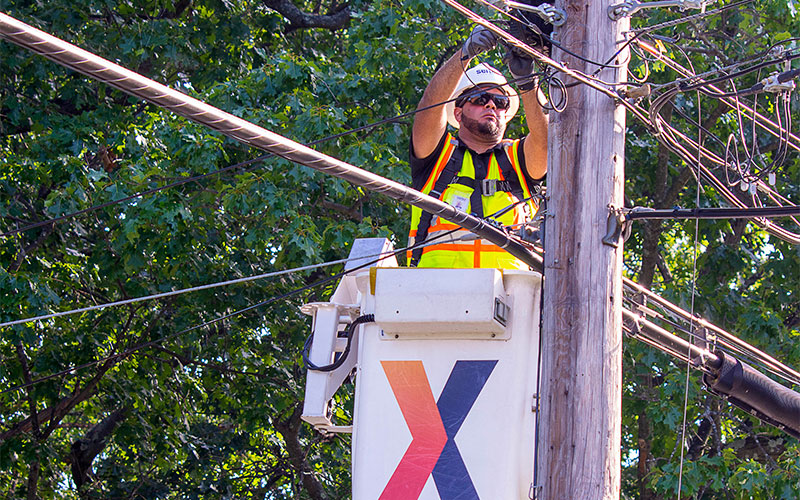
Make Ready Delays High Speed Fiber Rollouts
Communities throughout New England are turning to municipal broadband to solve their connectivity problems. However, many local leaders are finding that, when it comes to deployment, utility pole access can be an unexpected barrier.
What does the problem of pole access mean for a municipality building a new broadband network? Before the aerial build-out of a new fiber network can begin, a multi-step process called make ready must be completed to prepare poles for installation of new fiber attachments.
Outside the control of the network developer, a municipality or, currently, a state, make ready’s existing outdated regulations put the power and timing of pole preparation and licensing squarely in the hands of pole owners. Throughout much of New England, poles are commonly owned by large electric utilities or incumbent telecom providers. For a private network builder to add new equipment, the cooperation of the pole owner is critical. Existing wires often must be moved so the pole can meet Federal requirements for line spacing. Sometimes poles must be replaced.
When poles are owned by telecom giants, delaying the make ready process is instinctive, a calculated way to protect and preserve their monopoly status. The Institute for Local Self Reliance (ILSR) reported in this 2019 article, “…delaying pole preparation can be the death knell to community network projects that depend on public support and enthusiasm. Long delays drive up costs and increase impatience in a community, which is why incumbents trying to prevent competition have been in no hurry to prepare the municipal gain space for municipal fiber.” Passed in the early 1900s, the Municipal Gain Law gave local communities reserved, fee-free space on utility poles for telegraph wires. This is the space fiber will occupy.
Under existing make ready regulations, each company with attachments on a pole must send their approved contractor to move only that company’s attachments. With multiple attachments on every pole, this requirement further complicates the make ready process by extending timelines and increasing costs. Following existing rules, make ready can take many months -- often years -- to complete, severely delaying build-out and installation of new networks.
Make ready has slowed the network build process to varying degrees in virtually every project Sertex has deployed. On Block Island, the process is still ongoing, having taken 15 months as of February 2022. In Western Massachusetts communities, make ready took longer than anticipated in all of the 17 networks built by Sertex, dramatically delaying broadband access to residents desperately craving and needing the service.
So, what’s the solution? In August 2018, the Federal Communications Commission (FCC) issued their One Touch Make Ready (OTMR) order, a set of rules – not laws – designed to speed broadband deployment. Under OTMR, a single contractor is authorized to make all pole attachment changes at once, no matter who owns the equipment, a process that can speed, simplify, and control the costs of this critical step. Until OTMR becomes the law in New England and across the country, telecom giants will continue to dictate fiber construction timelines and have inappropriate control over the successful implementation of locally-owned fiber networks.

